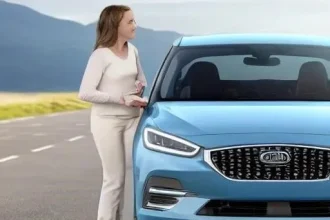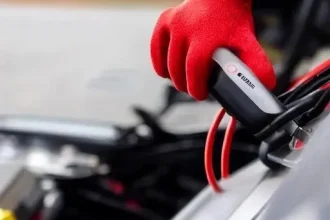For decades, the image of a German driver, confidently navigating the Autobahn, hand expertly dancing across a stick shift, has been etched into global automotive folklore. This perceived mastery of the manual transmission was not merely a preference; it was, for many, an intrinsic part of the German driving identity, a testament to precision engineering and engaged control. Yet, as the automotive world hurtles into a future dominated by electrification and automation, a seismic shift is quietly reshaping this enduring tradition. The very gears of Germany’s beloved vehicles are evolving, challenging long-held assumptions and ushering in an era of unprecedented driving comfort and technological sophistication.
The notion that “all cars in Germany are manual” is a romanticized myth, increasingly detached from present-day reality. While historically, manual transmissions undeniably held a commanding lead—with an astonishing 80% market share in the past—the landscape has dramatically transformed. Today, the balance has shifted profoundly: new car sales reveal that approximately 50% are manual, a figure that plunges even further to a mere 30% for middle and upper-class vehicles. This undeniable trend, driven by consumer demand for convenience, enhanced efficiency, and cutting-edge innovations, signals a profound transition in German driving habits and manufacturing priorities. The once-unquestionable reign of the stick shift is being challenged by a dynamic array of automatic alternatives, each offering distinct advantages.
| Key Insights: The Evolution of German Car Transmissions | Details & Implications |
|---|---|
| Historical Manual Dominance | Historically, up to 80% of cars sold in Germany featured manual transmissions, deeply ingrained in the nation’s driving culture and perceived skill. |
| Current Market Shift | New car sales now show approximately 50% manual, with middle and upper-class segments dropping to 30% manual, illustrating a rapid shift towards automatic variants. |
| Key Automatic Transmission Types |
|
| German Manufacturers & Innovation | Companies like ZF Friedrichshafen AG and Daimler AG are global pioneers, developing and supplying advanced AT, AMT, DCT, CVT, and DSG systems, thus driving the future of automotive transmissions worldwide. |
| Driver’s License Implication | In Germany, obtaining a driving license using a manual transmission vehicle permits the driver to operate both manual and automatic cars, offering valuable flexibility. |
| Official Reference for German Automotive Trends | ADAC (General Automotive Information) (Note: ADAC is Germany’s largest automobile club, a reputable source for automotive data and consumer information.) |
The transformation is not merely a statistical anomaly but a reflection of profound technological advancements. Modern automatic transmissions, including the sophisticated Dual-Clutch Transmission (DCT) — often referred to as a Direct-Shift Gearbox (DSG) in European cars — and the continuously variable transmission (CVT), are incredibly effective. These systems have moved light years beyond their sluggish, less efficient predecessors. They now offer seamless power delivery, remarkably improved fuel economy, and often quicker acceleration than their manual counterparts, thereby compelling even the most ardent driving enthusiasts to reconsider their preferences. The development of advanced units like 6, 7, 8, 9, and even 10-speed automatics showcases an industry aggressively pursuing optimal performance and driver comfort.
Leading German technology manufacturing companies, such as ZF Friedrichshafen AG, are at the vanguard of this revolution. ZF, a critical supplier, designs and produces a comprehensive range of transmission systems, including state-of-the-art automatics for virtually every class of passenger car. Similarly, automotive giants like Daimler AG, a quintessential German car manufacturing company, largely produce their own sophisticated automatic transmissions, only sourcing from external suppliers in exceptional circumstances. This internal development underscores a strategic commitment to automatic innovation, ensuring their vehicles remain at the cutting edge of global automotive engineering and consumer appeal. By integrating insights from artificial intelligence and advanced mechatronics, these companies are crafting transmissions that are not just functional but genuinely intelligent, adapting to driving styles and road conditions with unparalleled precision.
While the allure of the manual transmission persists for a dedicated cohort of purists, particularly in certain niche markets, its broader dominance in Germany is undeniably waning. The convenience of an automatic in congested urban traffic, the refined experience on long-distance journeys, and the increasingly efficient performance metrics are powerful persuaders for a new generation of drivers. Moreover, the evolving landscape of electric vehicles, which typically employ single-speed or highly simplified transmissions, further accelerates this trend, pointing towards a future where the traditional gear-shifting mechanism may become a cherished, but less common, relic. The choice, increasingly, is not between manual and automatic, but among a diverse spectrum of highly optimized automatic systems, each tailored to specific driving needs and preferences.
Looking ahead, the future of German driving promises an exciting blend of tradition and innovation. While manual cars will likely continue to be produced for specific markets and enthusiasts, the overwhelming trajectory points towards intelligent, efficient, and comfortable automatic solutions. This evolution is not a surrender of driving prowess but rather an embrace of progress, ensuring that German engineering continues to define excellence on the world stage. As the gears of change grind on, the German automotive industry, always forward-thinking, is adeptly navigating this transition, promising a future where driving is not just a necessity but an ever-improving, deeply engaging experience for all.






